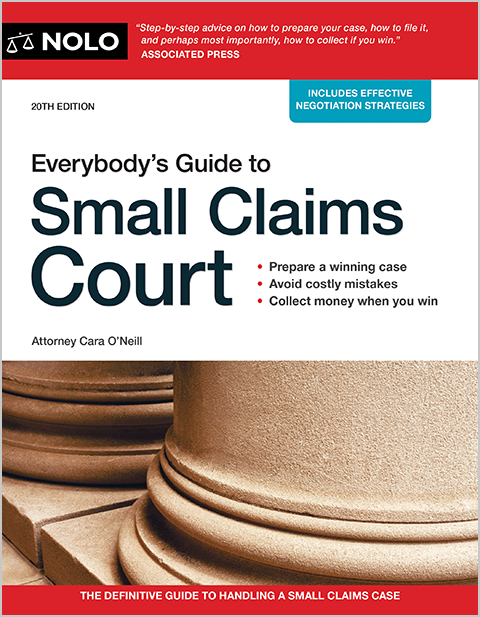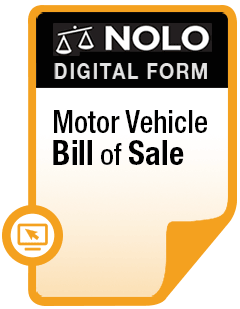Learn about five of the most common causes of motorcycles accidents and what to do if you've been injured in one.
Motorcycle riders are overrepresented in fatal traffic accidents:
- In 2021 alone, there were 5,932 motorcyclists killed, 14% of all traffic fatalities, according to the National Highway Traffic Safety Administration (NHTSA). An estimated 82,686 motorcyclists were injured in accidents that year.
- Riding a motorcycle is inherently risky. But safe riding practices (and helmets) can reduce the number of injuries and deaths.
Here's what you need to know about motorcycle accidents and how to get compensation for accident-related injuries and losses.
Motorcycle Collisions
Motorcyclists are uniquely vulnerable when they collide with other vehicles and fixed objects (like trees, guardrails, and fences). Unlike drivers and passengers in cars, motorcyclists aren't shielded by a box of metal, or cushioned by airbags. And motorcycles are much smaller and lighter than cars, trucks, and vans.
Cars Making Left-Hand Turns
Collisions between cars making left-hand turns and motorcycles are common, and often deadly. In 2021, NHTSA reported that in 43% of all fatal crashes involving another vehicle and a motorcycle, the other vehicle was turning left at the time of the crash.
Cars turning left typically strike oncoming or passing motorcycles in intersections. Common reasons for left-turn accidents include:
- driver distraction
- low visibility (it's often hard for drivers in cars to see and judge the speed of motorcycles), and
- speeding.
Left-turn right-of-way laws are clear: drivers turning left must yield to other traffic. So, the driver of a vehicle who hits a motorcycle while turning left will almost certainly be at fault. But motorcyclists might share fault in left-turn accidents if they speed, run a red light, or ride in the wrong lane.
Motorcycles in Head-On Collisions
According to the 2021 NHTSA report, just over half of the 6,082 motorcycles involved in fatal accidents were collisions with moving vehicles. In two-vehicle crashes, 75% of the motorcycles were struck in the front. (Only 8% of motorcycles were rear-ended.)
Head-on collisions are one of the most dangerous kinds of accidents for motorcyclists because of the mismatched amount of force involved (cars typically weigh four times as much as motorcycles) and the lack of safety features on motorcycles.
Collisions Between Motorcycles and Fixed Objects
Motorcyclists were also more likely to die in collisions with fixed objects, compared with people in passenger cars in 2021. For example, motorcyclists can be severely injured or killed when they veer off a rain-slicked road and hit a tree or a fence. Of the fatal motorcycle accidents in 2021, 24% were collisions with fixed objects, compared to 17% for passenger cars, 12% for light trucks, and 4% for large trucks.
Road Hazards a Motorcyclist Might Encounter
The driver of a car might barely notice something like gravel on the road, but bikers need to be on high alert for road hazards like this. Motorcycles are smaller and less stable than a car, so irregularities and unexpected objects on the road can cause a motorcycle to crash.
Examples of common road hazards for motorcycles include:
- rough and bumpy roads
- gravel on pavement
- slick surfaces (like painted crosswalk lines and leaves)
- edge breaks between lanes of differing heights
- expansion joints on roads and bridges
- railway tracks and crossings
- debris or objects on the road
- small animals, and
- puddles.
Motorcycle Lane Splitting
Most drivers have seen it: A motorcycle snaking between a line of stopped or slowly moving cars. The practice is called lane splitting. Lane splitting is a common cause of motorcycle accidents because cars simply aren't expecting a vehicle to pass them in slowed or stopped traffic, and there's very little room for motorcycles to maneuver when they weave between cars.
As of 2023, only a few states allow lane splitting. If an accident happens when a motorcycle is lane splitting, there's a good chance the motorcyclist will be found at fault.
Motorcyclist Riding Behaviors
Motorcyclists might not be able to control factors like road hazards, but they can control their own behavior. Some motorcyclists are willing to break the law and violate safety rules when they ride. Let's take a closer look at how motorcyclist behaviors contribute to traffic accidents.
Alcohol Use
Riding a motorcycle while intoxicated is incredibly dangerous (and it's a crime). Nearly 30% of motorcyclists in fatal crashes in 2021 were alcohol-impaired (blood alcohol level of .08% or higher).
Speeding
Light and more powerful motorcycles (like sport and supersport bikes) encourage speeding and other high-risk behavior. A full 33% of motorcycle riders in fatal crashes in 2021 were speeding. Younger riders are even more likely to be involved in fatal accidents while speeding. Roughly half of all riders in the 21-24 age group who died in motorcycle accidents were speeding when they crashed.
Not Wearing a Helmet
One of the easiest things a motorcyclist can do to stay safe is to wear a helmet. The NHTSA estimates that 37 out of every 100 motorcyclists killed in crashes while not wearing a helmet could have been saved had they been wearing a helmet.
Some states require all motorcycle riders to wear helmets. Other states require riders to wear helmets based on their age (similar to bicycle helmet laws).
Steps to Take After a Motorcycle Accident
Your first priority after a motorcycle accident is to make sure you and others involved in the crash are safe. Call 911 immediately if you need emergency medical attention. If you're not sure if making the call is necessary, call 911 anyway.
If you don't call 911, call the police. An officer will be sent to the scene. The officer will prepare a police report and speak to everyone involved. A police report can be very useful in settlement negotiations.
You can take steps to help yourself get full compensation for your injuries. You should gather potential evidence for your car accident case, including:
- insurance information for any person and vehicle involved in the accident
- names and phone numbers of all witnesses
- pictures of the accident scene and your injuries
- video footage from traffic and security cameras, and
- a copy of the police report when it's available.
Hit-and-Run Motorcycle Accidents
Every state requires drivers to stop at the scene of a car accident. Hit-and-run accidents involve drivers who leave the scene of the crash without stopping to identify themselves and help anyone who might need assistance.
Hit-and-run drivers flee for all kinds of reasons. The driver might be under the influence of alcohol or drugs, have outstanding tickets, or fear going to jail for hitting a motorcyclist.
If you've been hit by a driver who flees the scene, don't follow the fleeing driver. Instead, call 911 if you need medical help and then call the police. A hit-and-run violation is a crime.
Immediately after the accident, write down as much information as you can about the driver and the fleeing car, including the license plate number (even a partial number is helpful) and the make and model of the car. Pay attention to which direction the fleeing car is headed and let the investigating police officer know if the fleeing car has accident-related damage.
Learn more about your options if you're injured by a hit-and-run driver.
Filing a Motorcycle Accident Claim
In most states, the person who is at fault for the motorcycle accident has to pay (typically through an insurance company) for accident-related losses and injuries. Proving fault for a car accident means proving negligence (carelessness).
You'll probably be making your case to an insurance company first, not to a judge or jury in court. An injured motorcyclist might file a claim against one or more of the following:
- the drivers involved in the accident
- the owners of all cars involved in the accident if the owners are different from the drivers
- anyone who contributed to the accident (like a jaywalking pedestrian)
- the government agency responsible for road maintenance or planning if poor road conditions caused the accident, and
- the motorcyclist's own auto and health insurers.
Most car accident claims settle well before the case goes to court. But if insurance settlement negotiations break down or the responsible party's insurance coverage isn't enough to fully compensate you for your injuries, you can file a personal injury lawsuit.
How Much Is a Motorcycle Accident Injury Claim Worth?
No two motorcycle accident claims are the same, so it's hard to predict how much compensation you will get for your losses (called "damages"). Most insurance adjusters (and judges and juries) consider:
- the seriousness of your injuries
- your past and future medical bills
- your prognosis (likelihood of fully recovering from your injuries)
- lost income (past and future), and
- pain and suffering (physical and mental).
Will My Motorcycle Accident Claim Settle?
Your chances of reaching a settlement agreement in a motorcycle accident case depend on factors like:
- how easy it will be for you to prove that someone else is legally responsible (liable) for your injuries
- the availability and amount of insurance coverage, and
- your ability to overcome anti-motorcycle bias.
Many people, including insurance adjusters, have preconceived notions about motorcyclists. They might assume that motorcyclists are risk-takers who are more likely to be at fault for an accident than other drivers. You'll probably have to overcome this bias with concrete evidence to get a fair settlement offer or verdict in your favor.
How Long Do I Have to File a Motorcycle Accident Lawsuit?
Each state sets a limit on the amount of time you have to file a lawsuit (called a "statute of limitations"). The specific deadline varies from state to state and depends on the type of case you want to file.
In most states, you'll have one to three years to file an injury-related car accident lawsuit. You might have more or less time to file a lawsuit based on property damage only in your state. The consequence for missing the deadline to file a lawsuit is harsh—you'll likely lose your right to sue and get compensation for your losses. When in doubt, don't delay and talk to a lawyer.
Getting Legal Help After a Motorcycle Accident
If you're injured in a motorcycle accident, you should talk to a lawyer. An attorney who specializes in motorcycle accidents can help you handle your insurance claim, negotiate a fair settlement, or advocate for you in court.
Learn more about how to find a personal injury lawyer and what to ask a potential personal injury lawyer. When you're ready, you can connect with a lawyer directly from this page for free.



